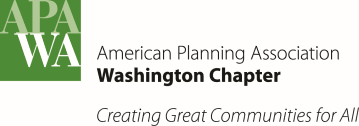- About Us
- Events & Training
- Professional Development
- Sponsorship
- Get Involved
- Resources
Quantifying and Reducing Greenhouse Gas Emissions from Local Government Cement and Asphalt PurchasingBy Jacob Tracy
To put these emissions in perspective, the production of cement used in three large construction projects undertaken by Seattle Public Utilities (SPU) resulted in roughly 5,927 metric tons of CO2 equivalent (MTCO2e). Considering that SPU’s recorded emissions from all sectors in 2009 (purchasing was not included) was roughly 14,000 MTCO2e, it should be obvious that these materials can have a huge impact on a local government’s emissions profile. In order to reduce these emissions, local government officials should look to techniques from both planning and engineering. Strategies from planning focus on reducing the overall amount of concrete used in city projects through use of green infrastructure. By incorporating street trees, bioswales, and landscaping to the maximum amount possible in city construction projects, emissions from these materials can be avoided altogether. Strategies from engineering focus on reducing the GHG intensity per unit of material through use of recycled content, supplementary cementitious materials such as fly ash and blast furnace slag, and technologies that reduce the amount of energy used in the production process. While use of these strategies is not feasible in every case, they do yield a number of co-benefits and have the potential to reduce emissions per unit of materials by up to 80%. Though these planning and engineering strategies exist and are being used to some extent for cost and performance reasons, policy changes are needed to encourage their aggressive use for emissions reductions. Potential policy changes include:
In order to assist local governments in reducing these emissions, deliverables for this thesis include a materials reporting form, greenhouse gas calculator and alternatives evaluation table that can be used to analyze emissions at the project level. By inputting quantities of materials and usage of GHG-reducing technologies, project managers can compare side-by-side GHG emissions from alternative practices. The alternatives evaluation also gives project managers the opportunity to see how these practices will affect the cost of materials. Local governments are only beginning to realize the significance of emissions from construction purchasing. If they choose to ignore this sector, “carbon neutrality” will be in name only. The strategies described here are simple and effective ways for local governments to move forward on their mitigation goals. We don't need to wait for technology to catch up to the problem; this is something we can do now. Each year, the UW Professionals Council, together with APA Washington Chapter, review professional projects and theses submitted by graduate students in the Masters of Urban Planning program at UW. The review process for 2015 involved two rounds of judging four categories of the student projects submitted via a poster and presentation. Jake Tracy is the first place winner of the 2015 Professionals Council/APA award of excellence for his work. Jake will also receive a free registration to the fall APA state conference where APA members can meet him and view the poster of his work. Jake Tracy is a recent graduate of the Master of Urban Planning program at the University of Washington. He recently completed an environmental internship with Seattle Public Utilities and is currently working on a project helping cities in developing countries to create and implement climate-smart capital investment plans.
|

